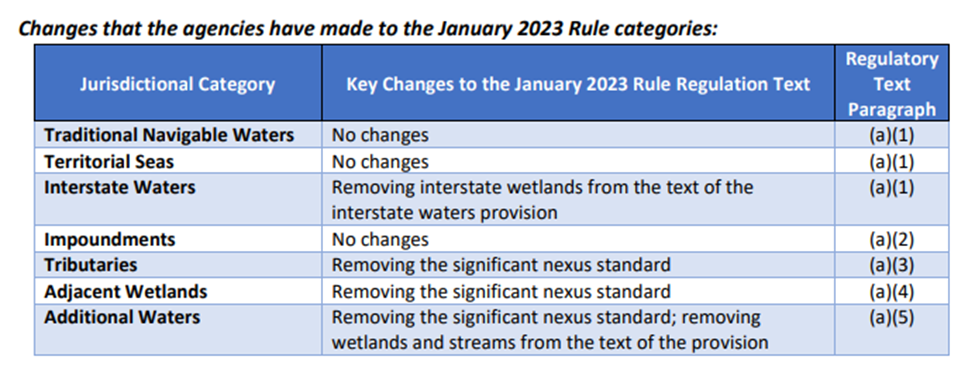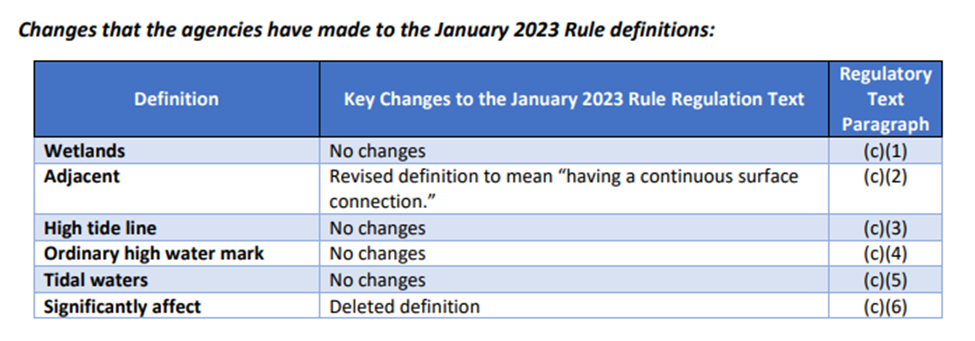For decades, developers and environmental groups have disagreed about the scope of the Clean Water Act. The definition under scrutiny – the “Waters of the United States”, also known as WOTUS, establishes the geographic scope of federal jurisdiction under the Clean Water Act, as in which waters are subject to regulation under the Act. In the past and in the EPA’s rule issued in January 2023, the “Waters of the United States” applied to a relatively broad range of waters, including not just traditional navigable waters, but interstate wetlands, tributaries, and streams, including waters that “significantly affect” main bodies of water (a multi-step inquiry called the significant nexus standard).
In May 2023, however, the United States Supreme Court weighed in on the matter when it examined the definition of “Waters of the United States,”, in Sackett v. EPA, 598 U.S._, 143 S. Ct. 1322 (2023). The Court invalidated portions of the EPA’s January 2023 rule and struck down the significant nexus standard. In response, the EPA and Army Corps of Engineers revised the January 2023 Rule to conform with Sackett with the Revised 2023 Rule, which went into effect on September 8, 2023.
The new definition of wetlands subject to the Clean Water Act removes:
• “Interstate wetlands” from the definition of “interstate waters” and;
• The significant nexus standard, which encompassed waters “that either alone or in combination with similarly situated waters in the region, significantly affect the chemical, physical, or biological integrity of water identified in paragraph (a)(I)” from all categories of waters.
This is laid out in a different way in the following table:

Source here from the following webpage.
The revised rule also amends the definition of “adjacent” (which used to be much longer) and “significantly affect” (which is no longer applicable) as shown in the table below. Practically, this will mean that waters need to be more clearly connected to other waters to be subject to the Clean Water Act.

Source here from the following webpage.
In sum, the revised rule narrows the scope of “Waters of the United States,” which narrows the scope of the jurisdiction of the Clean Water Act. Moving forward, it will be easier to develop on lands that used to be subject to the Clean Water Act because of the many restrictions and requirements that would have otherwise been required will no longer be applicable. Theoretically, it will also be easier to identify which bodies of water or wetlands are Waters of the United States or not because there is no need to go through the many factors of the significant nexus standard.
[View source.]